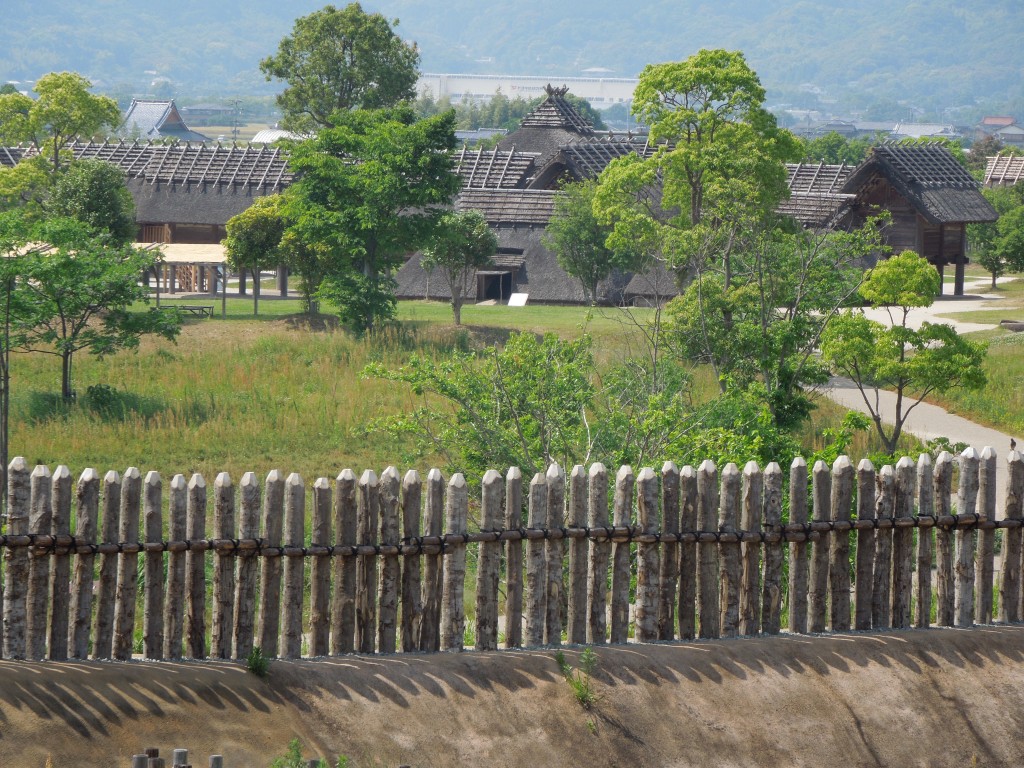
When the Yoshinogari area in northern Kyushu was excavated in 1986, the extent of the ruins led to great excitement that it might be the site of an ancient Yamatai kingdom mentioned in Chinese chronicles. People flooded to visit, and in 1992 it was decided to turn it into a historical park celebrating the Yayoi era (300 BC – 300 AD).
Reconstructed houses have been erected on the very sites of the ruins (which lie beneath them, buried under a protective covering). There’s also an excavated mound on display with genuine burial jar fragments. The result is a surprisingly informative display of Yayoi life, done in consultation with leading experts in the field of archaeology and ancient architecture. As such it enables one to see the latest thinking among Japanese specialists about their past.
There are five main areas: one where the rulers lived; one for politico-religious ceremonies; one a burial site for the ruling elite; one where ceremonial objects were made; and one a market centre with storehouses. The population of this small kingdom is estimated at 5,400.
The overall effect is to show how the move from a nomadic lifestyle to rice-growing communities in Yayoi times led to vested interests and the need for defense, weapons and watchtowers.
Religious life
It was in Yayoi times that proto-Shinto developed. Like other aspects of Yayoi culture, religious belief derived from the Chinese mainland, as transmitted through Korea. The park’s literature constantly refers to the Chinese situation in the assumptions made about Yoshinogari culture and lifestyle.
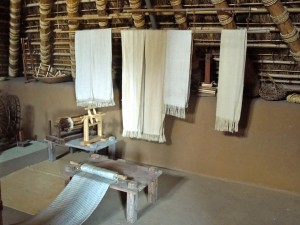
Silk-weaving was invested with spiritual allure
One area – Nakanomura – is believed to have been where priests made ritual objects. It’s also believed that they brewed alcohol and raised silkworms in the same compound. In the Kojiki Amaterasu spends her time weaving, and the significance of silkworms and religious ritual is something that Michael Como has explored in Weaving and Binding – Immigrant Gods and Female Immortals in Ancient Japan.
In another of the park’s areas – Kitanaikaku – it is supposed that prayers to ancestors were held. A high priest communed with ancestral spirits and pronounced on matters of state, including setting the dates for important events such as festivals and harvesting. Perhaps it was in just such a village that the famed shaman-queen Himiko lived.
On the roof of religious buildings, as well as on the entrances to the compounds, are wooden bird statues. ‘In the Yayoi period, a bird seems to have been a symbol or God’s messenger that brought spirits of crops and exorcised the evil spirit,’ says the park’s literature.
For me personally the most striking object in the whole complex was the shaman’s pillar standing before the burial mound. Here the ancestral spirits – the kami – would have been drawn down for the embryonic nation’s most important rites. The simple pillar reaching up to the clouds is a forerunner of the shinbashira of Ise and the onbashira pillars of Suwa. The legacy of Japan’s shamanic past is thus built into the very fabric of today’s architecture. Even the way of counting kami is with the word for pillar!
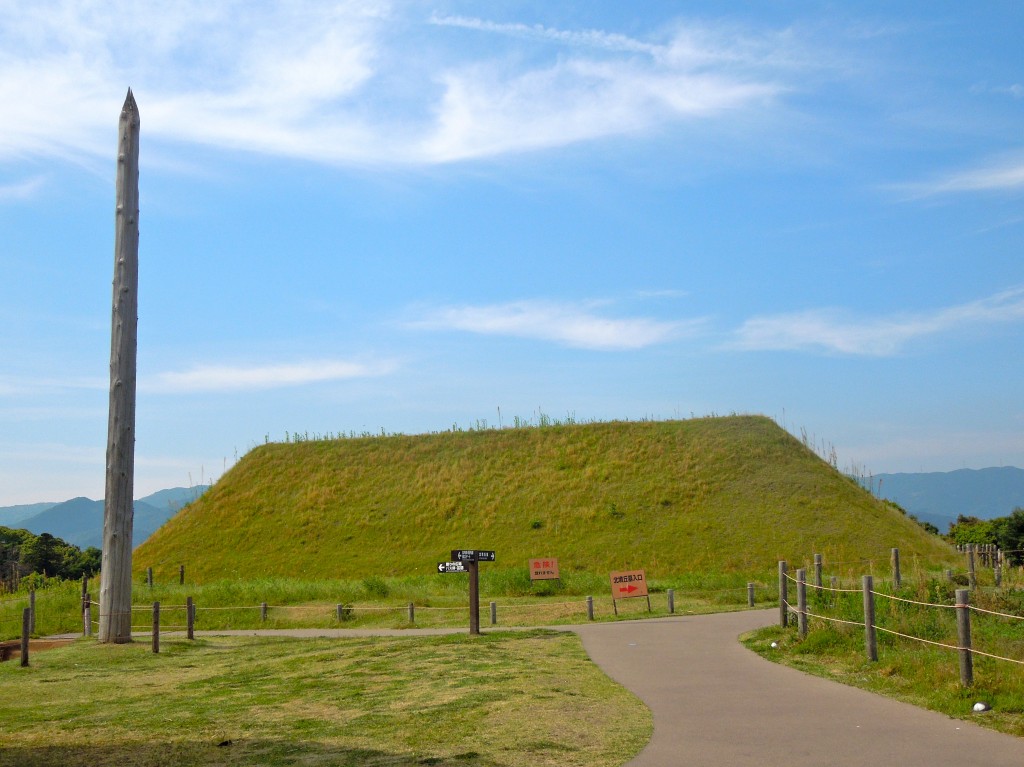
Shamanic pillar before the royal burial mound
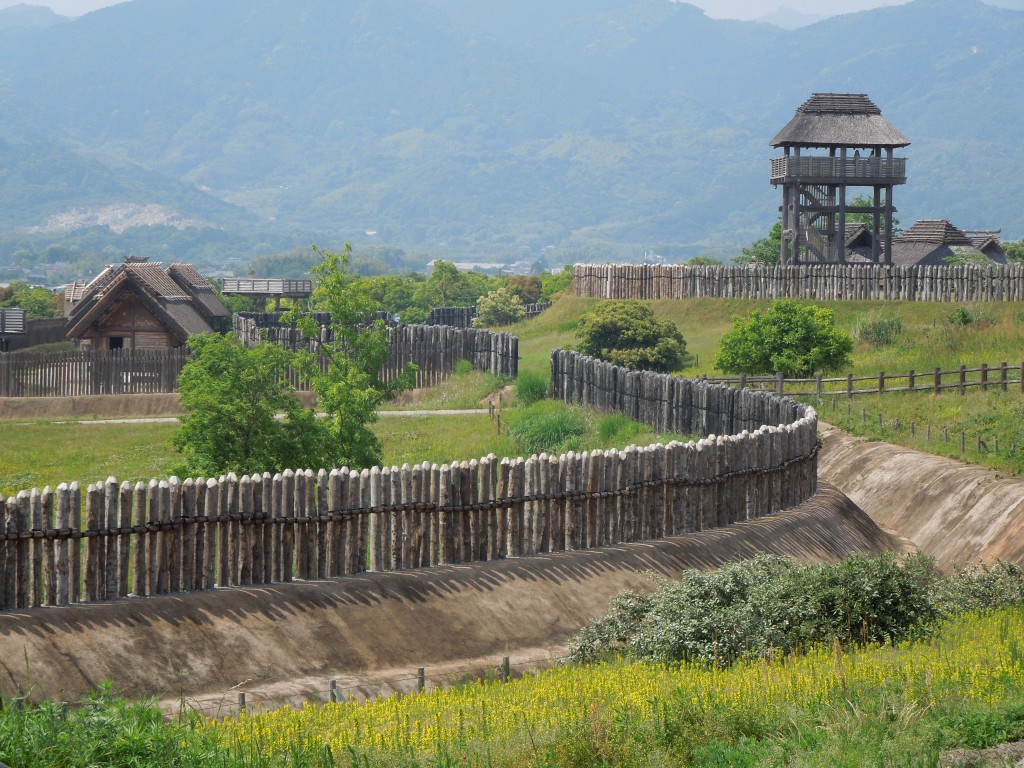
The small kingdoms of Yayoi times needed strong defenses to protect themselves from their rivals
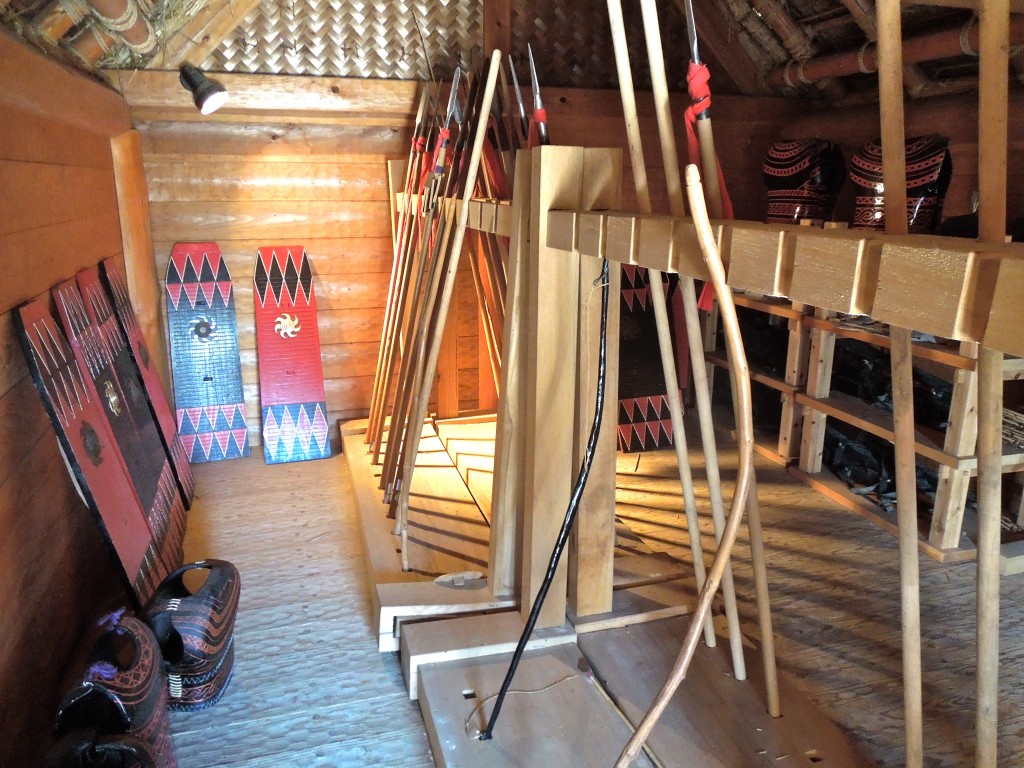
Yayoi weapons: bows, halberbs, shields and armour too
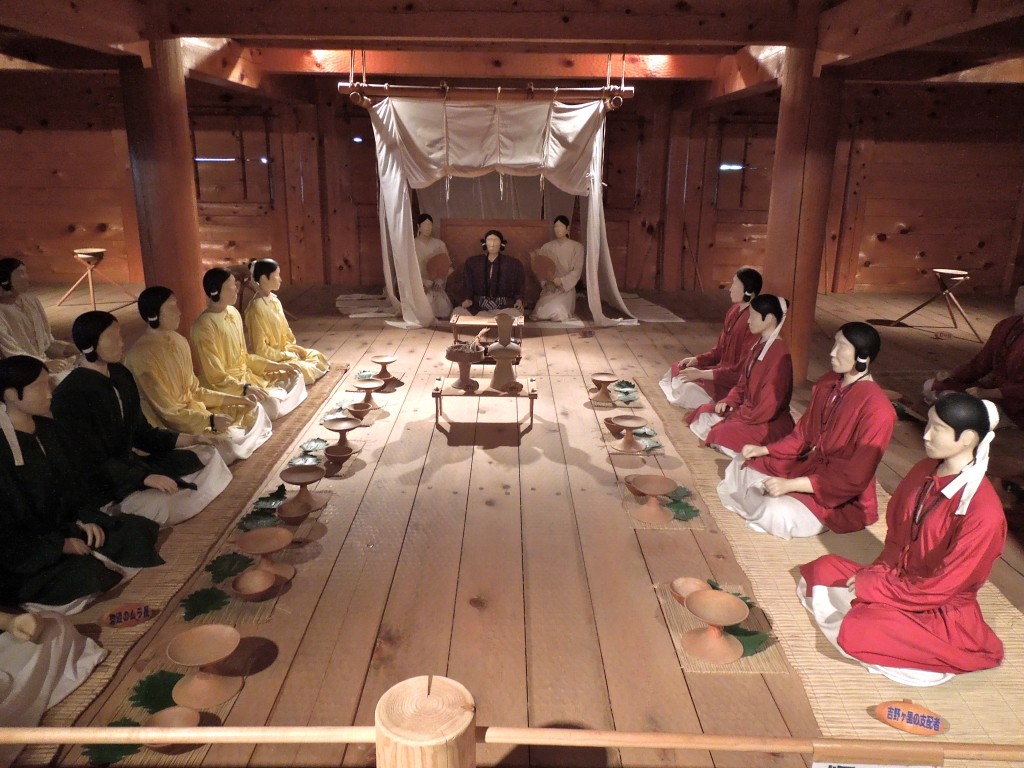
Meeting of the Yoshinogari king with his advisors and village headmen
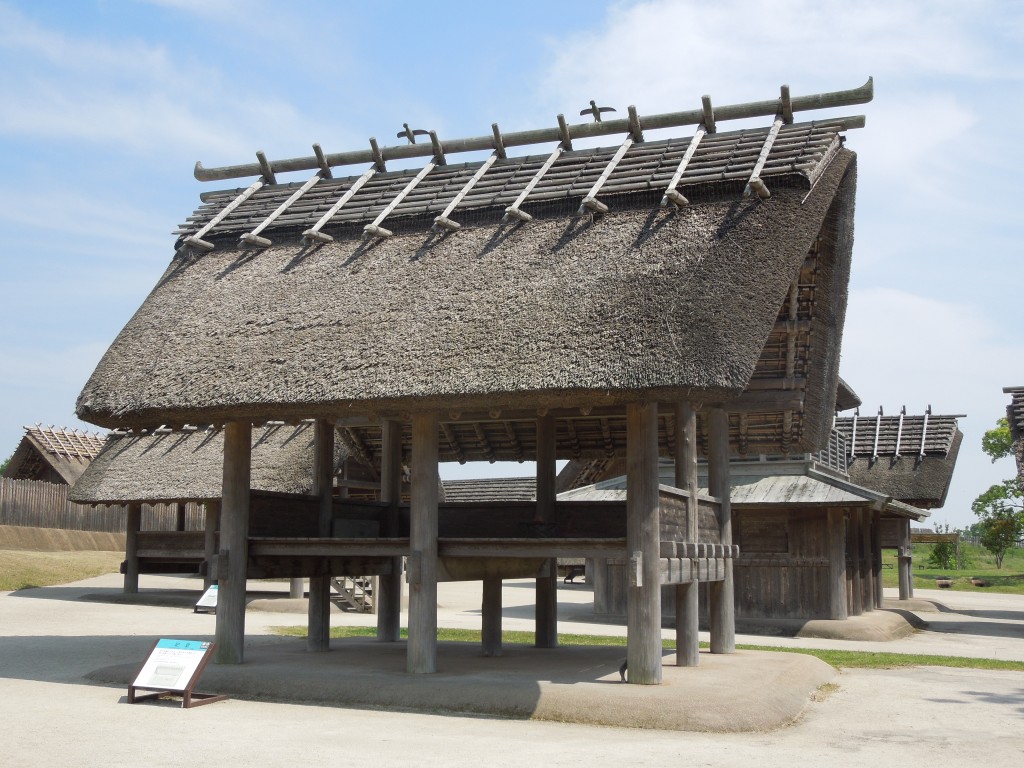
A Yayoi shrine, with drum building behind for announcing rituals
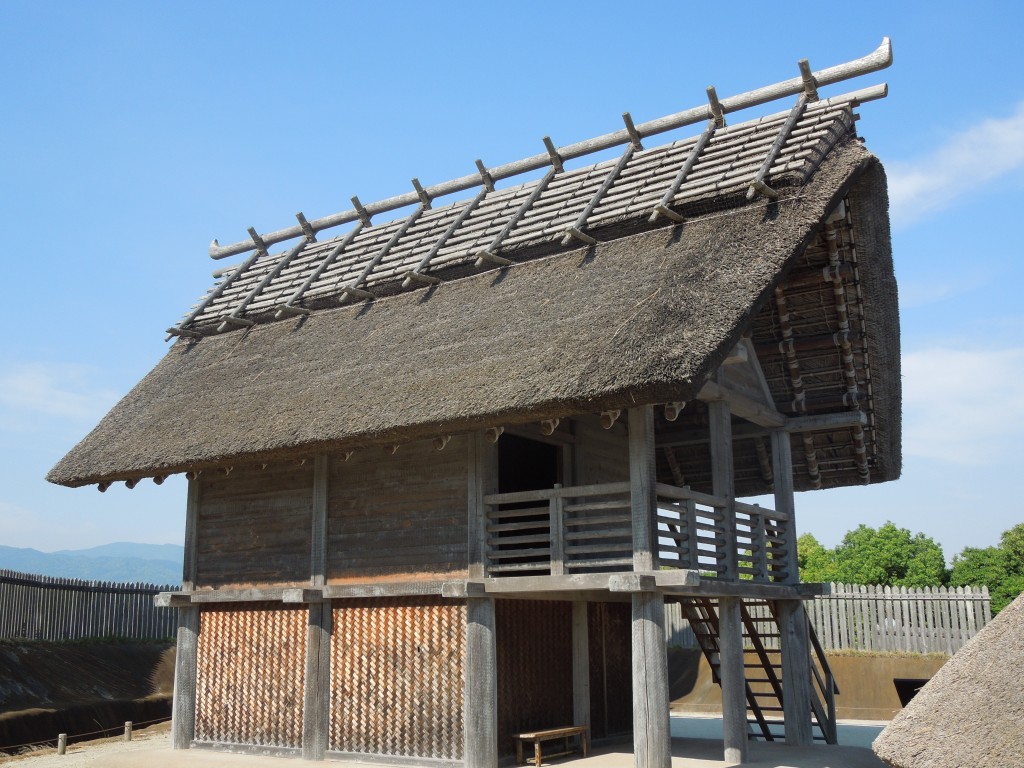
House of the head priest, whose communing with ancestral spirits enabled him or her to pronounce on matters of state
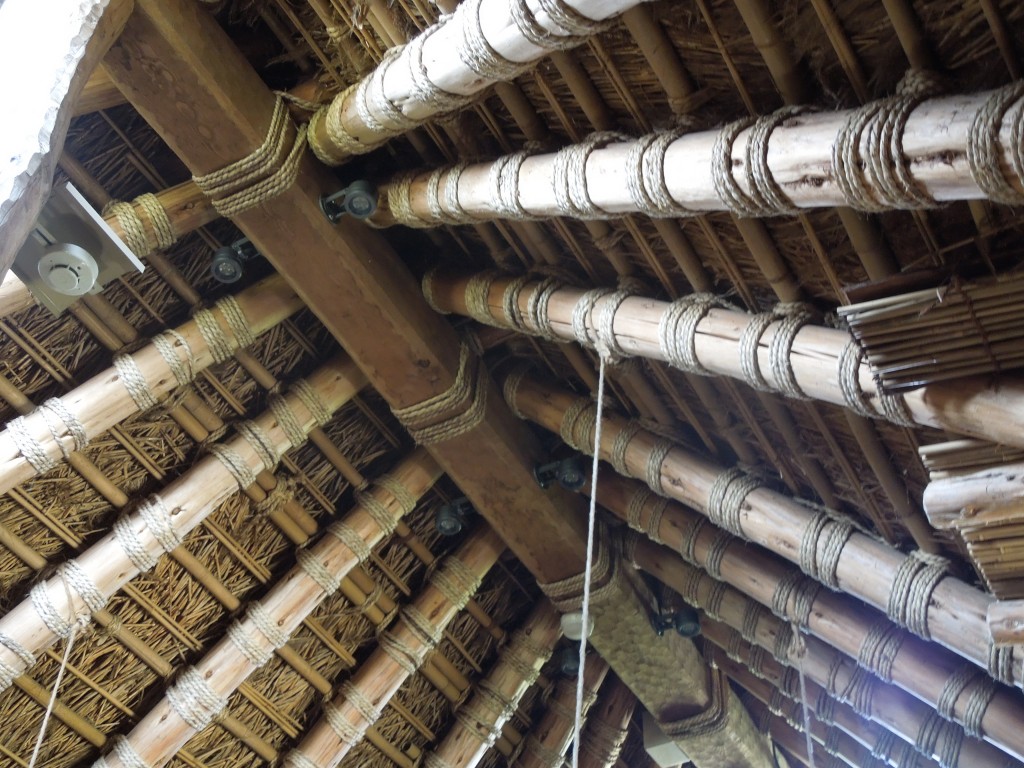
Roof detail
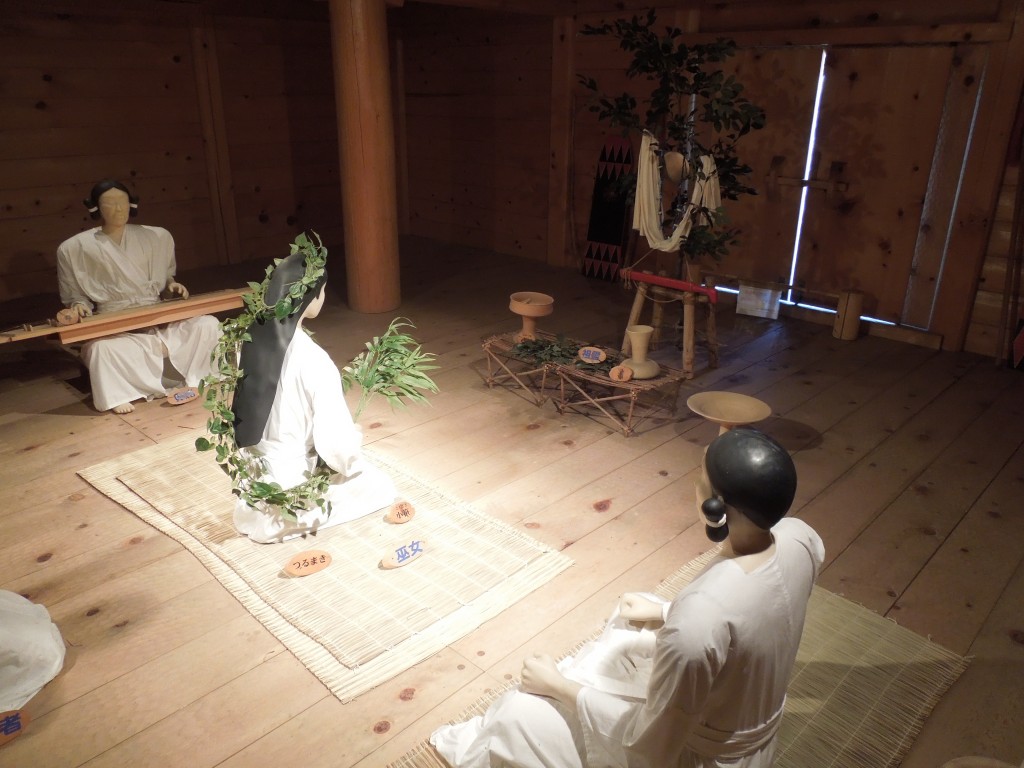
Religious ceremony carried out by a miko shamaness
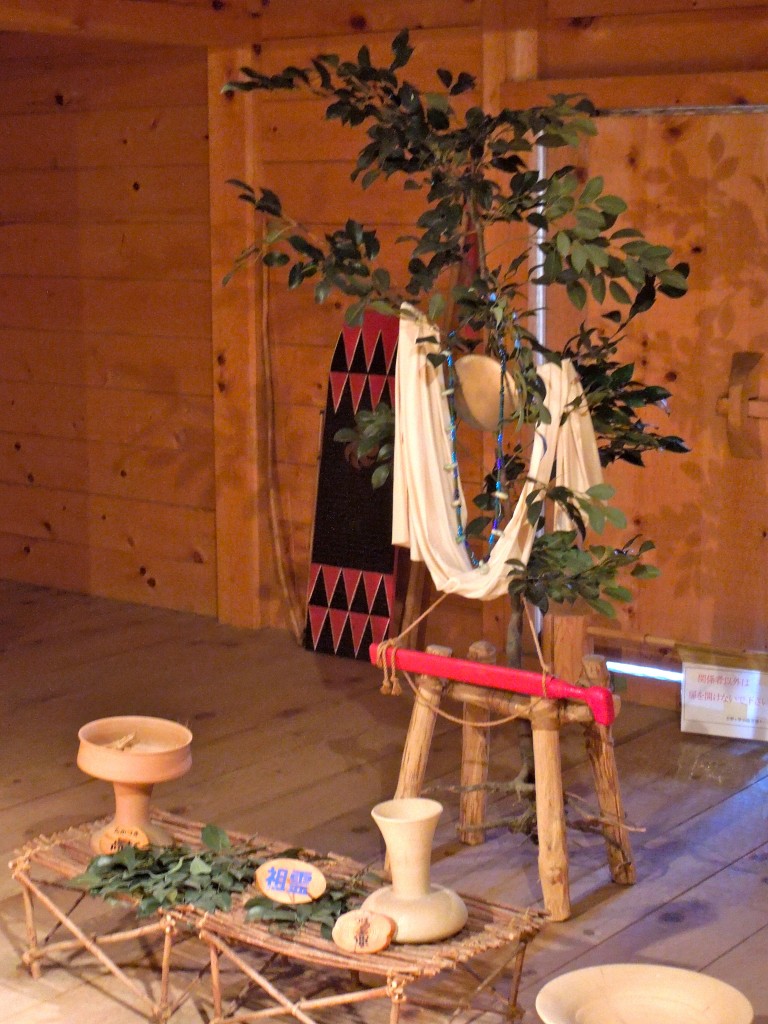
How a Yayoi altar may have looked

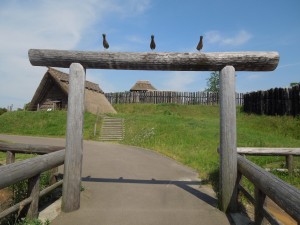
Richard Newton has written a piece on his website Let’s Japan about how the new Tokyo Sky Tower contains a ‘shinbashira’ for stabilisation in earthquakes. It’s a technique taken from pagodas, such as that at Horyu-ji built in the early seventh century. An article in the Economist has linked the use of the structural pillar in the pagodas with the earlier use of the shamanistic pillar in Japan…. (quote follows)
“So ingenious is it [the shinbashira] that one cannot but wonder: did the Japanese craftsmen of 14 centuries ago stumble on the concept of the shinbashira by accident, or by inspiration? All one can say is that the idea of an upright wooden pillar with one end buried in the ground to tap the spirits of the inner world has been a religious symbol in Japan since the earliest of times. Recent excavations of Jomon sites dating back to 10,000BC have unearthed evidence of wooden posts being used for ceremonial purposes. One modern view is that, like the early Christians in Europe, the early Buddhists in Japan sensibly incorporated much of the native religion that went before.
If that were the case, the early pagodas may have incorporated the Indian symbolism of the stupa with the early Japanese symbolism of the wooden post. The idea that the shinbashira could be as much a religious object as a dynamic balancing device for dampening the destructive forces of earthquakes and typhoons is attractively reassuring. God is in the details, after all.” (http://www.economist.com/node/456070)